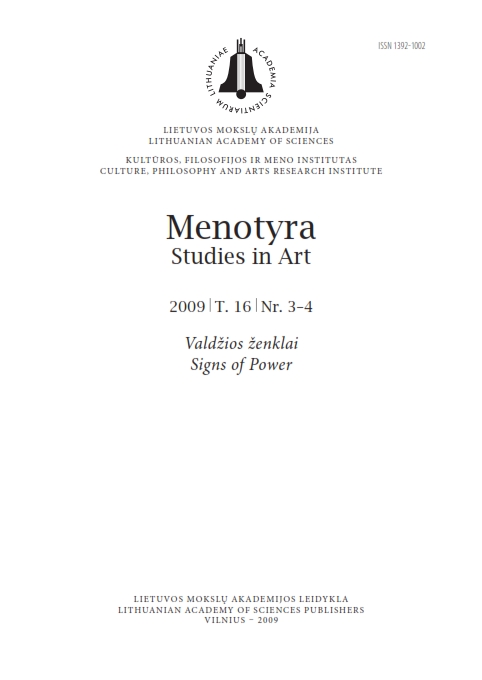Patriotiškumo ženklai XX a. pirmosios pusės kasdienybės kultūroje
Signs of patriotism in the culture of daily life of the first half of the 20th century
Author(s): Lijana ŠatavičiūtėSubject(s): Customs / Folklore, Visual Arts, Cultural Anthropology / Ethnology, Nationalism Studies
Published by: Lietuvos mokslų akademijos leidykla
Keywords: national culture of the first half of 20th century; movement of national revival; culture of daily life; national costume; handicrafts;
Summary/Abstract: The object of discussion in the article is the spread of state symbols in the culture of daily life of the first half of the 20th century. The authoress seeks to establish the preconditions for the penetration of historical signs into non-representational spheres, the scale of their spread, and the most typical forms of their expression. In the period of the national revival movement, the young Lithuanian nationalism was limited to the Lithuanian press and schools, the development of ethnic culture and the awakening of national sentiments. Though at the beginning of the 20th century historical state symbols were increasingly used by professional artists, they were still uncommon among ordinary citizens.A totally different situation was formed in Lithuania after regaining independence when it became necessary to unite the nation for the purpose of building a unified state. Influenced by state propaganda and nationalist ideology, Lithuanians tried to fill their daily environment with state symbols: the Pillars of Gediminas, the Cross of the Jagiellonians, the Vytis (Chaser), the tricolour, and portraits of the Grand Dukes. These symbols were transferred to daily life from the press, public events, festivals, exhibitions and applied graphic works.State symbols were used for the décor of summer camps of youth organizations and patriotic actions (human chain of Scouts in the form of the Pillars of Gediminas on the dunes of Nida, 1933). They frequently appeared in handicrafts: textiles, carvings, and decorated Easter eggs. Linen towels used to be decorated with the words of the national anthem, sashes had occasional inscriptions and patriotic slogans, tablecloths and floor mats showed state symbols. The estate owner and physician Boleslovas Kaunas-Kaunackis established a crypt in the form of the Pillars of Gediminas near Bugeniai (Mažeikiai district), and in the Antalina manor (Anykščiai district) its proprietor Mykolas Linkevičius planted fir trees in the form of the perennial “Pillars of Gediminas”. In the process of construction of the Žemaičiai motorway, the Pillars of Gediminas with the date “1937” were cast of concrete on a hill slope near Ariogala.The wish of the ordinary citizens of the country to see the state symbols in daily life reveals their wish to return to their historical roots, to identify themselves with the country’s history and cannot be interpreted as a mere devaluation of state symbols.
Journal: Menotyra
- Issue Year: 16/2009
- Issue No: 3-4
- Page Range: 117-129
- Page Count: 13
- Language: Lithuanian

